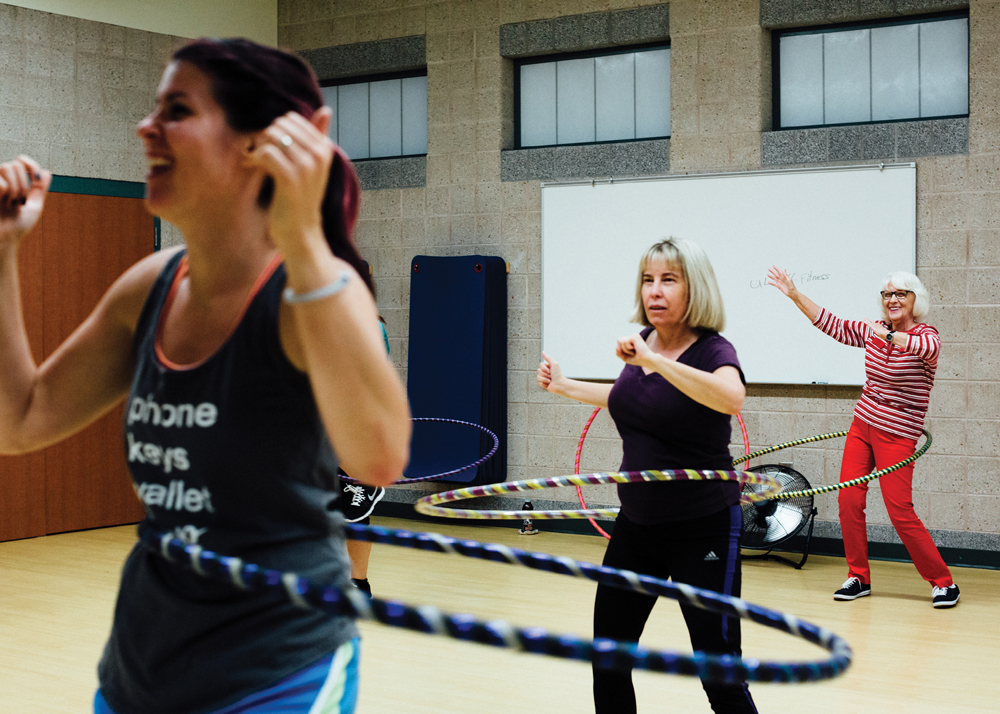
Photograph by Dustin Chambers
Nine women in workout attire take their places inside a fitness studio, wielding Hula-Hoops of various sizes and sparkle. As “Moves Like Jagger” pumps through the Peavey speakers, the biggest smile of the bunch belongs to 73-year-old Joyce Walters. By day she handles finances for a Buford church, and though her preacher has ribbed her for it, Walters never misses Hooplovers Hula Sculpt on Tuesdays. She high-steps tonight in red pants and joins classmates in low-impact, luau-meets-chicken-strut movements that make her feel like the kid she was in the 1950s, when the Hula-Hoop craze swept America. “I was getting weak in the legs,” Walters says, “and since I’ve been doing this, my legs are stronger; my hips are stronger.” Michelle Obama and the Mayo Clinic endorse hooping, Kelly Osbourne calls it a surefire belly-flab blaster, and Cosmopolitan says the constant hip and stomach “pulsing” required to keep hoops in orbit is a fast-track to “Beyoncé abs.” The average exerciser burns 400 calories per hour by waist-hooping alone, but the count is much higher with the mélange of movements in this class (lunges, triceps extensions, twirls with neck and arms). Hooping also loosens cranky back muscles, straightens posture, and improves core strength and mobility, says class instructor Michelle Hamilton, a bubbly, pony-tailed former preschool teacher who completed three months of online courses to become a certified Hoop Love Coach. Hamilton credits hooping with changing her life in 2015, after a knee injury had sidelined her running routine and she spotted a girl gleefully hoopdancing at an Atlanta music festival. A year later her four weekly classes (and hoop-making business, Pachy Hoops) had become a legitimate job. Hoopers say there’s something in these plastic tubes that rekindles youth and fosters a community. “You grow up and forget how to play, basically,” Hamilton says. “In here, it doesn’t matter what your skill level is, your age, your demographic, or anything; I want this to be your tribe.”
This article originally appeared in our December 2016 issue.













